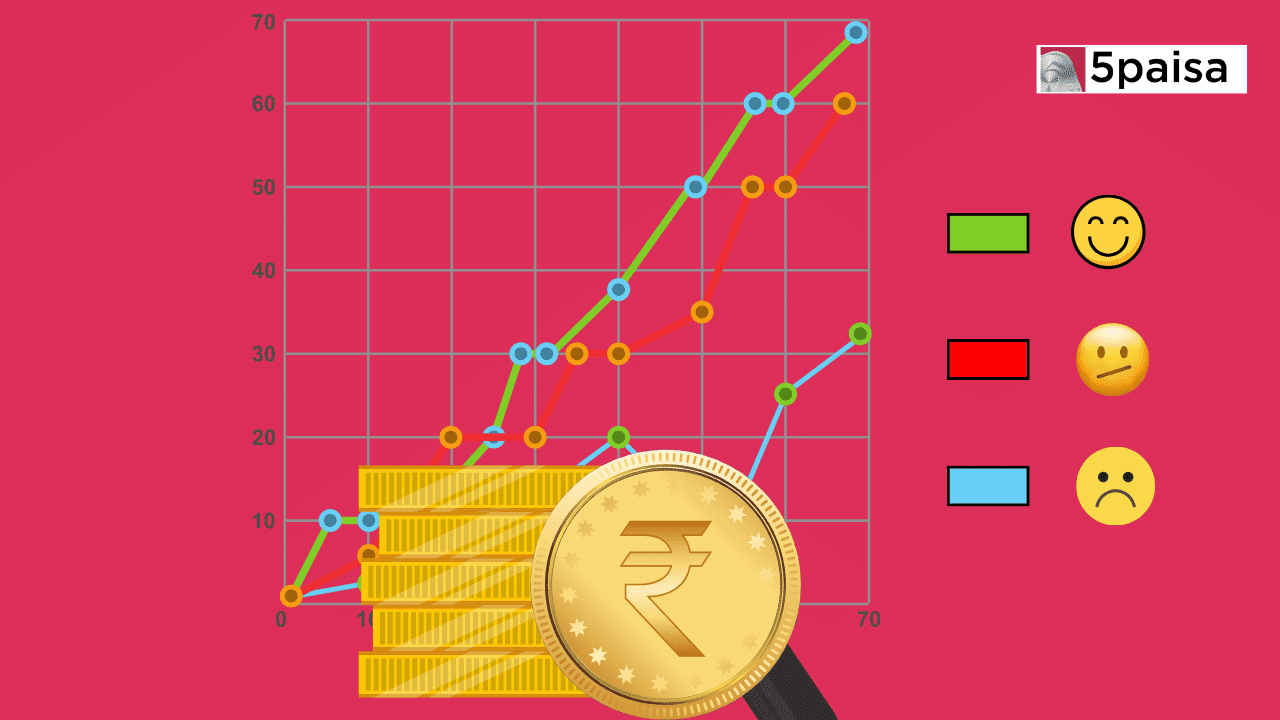Weekly Wrap-Up - Gaurav Munjal: Lone Wolf of Indian Edtech
Economy and Market Sentiment Updates : 4th September 2023

Last Updated: 4th September 2023 - 04:32 pm
In the first four months of the fiscal year 2024 (4MFY24), India's fiscal landscape has exhibited a mix of positive and negative signs. This blog delves into the incipient fiscal stress, dissecting key indicators, including fiscal deficit, tax collections, and expenditure patterns. Let’s also explore the implications for the yield curve and the challenges ahead for GST collections. While avoiding specific numbers, this blog focuses on sentiment analysis to provide a comprehensive overview.
The central government's fiscal deficit in 4M-FY24 remained relatively stable at 34% of the budgeted estimate for the fiscal year. However, beneath the surface, there are subtle signs of fiscal stress, primarily due to fluctuations in tax collections. Notably, capital expenditure remained robust, while revenue expenditure was cautiously managed.
Fiscal Deficit and Borrowing
Despite the steady fiscal deficit, there are concerns about the sustainability of revenue receipts. Let’s assume if we revise the fiscal deficit to GDP estimate upward to 6.1%, with expectations that dated securities borrowings will remain unchanged and T-bill borrowing could see an increase. The yield curve is expected to maintain a flattening bias due to these fiscal dynamics.
Tax Collections
Tax collections in 4MFY24 revealed a mixed picture. Gross tax revenue exceeded expectations, but net tax revenue lagged behind, primarily due to weaknesses in direct taxes. Corporate tax collections experienced a decline, while income tax growth also weakened. Excise revenues also fell short of expectations.
Expenditure Trends
Expenditure in 4MFY24 witnessed an increase, primarily fuelled by capital expenditure. Investments in roads, railways, and loans to states have contributed significantly. Revenue expenditure, though in check, showed signs of picking up in July, which could continue but at a slower pace.
Risks and Uncertainties
The weak corporate tax collections despite robust listed company profits remain a cause for concern. The Reserve Bank of India's surplus transfer may only partially offset expected shortfalls in tax revenues and divestment. Additionally, the busy election cycle introduces the risk of higher welfare spending. These uncertainties prompt a revision of the fiscal deficit estimate.
Yield Curve and Borrowing
To finance the higher-than-budgeted fiscal deficit, the government may turn to small savings or short-term T-bills, which would alleviate pressure on dated securities supply. The far end of the yield curve is expected to remain supported, while the shorter end may experience pressure due to the RBI's liquidity tightening measures.
GST Collections
July's GST collections remained in line with expectations. While there was a year-on-year increase, there is a need for collections to surge, especially during the festive season, to bridge the gap toward meeting the FY2024 budget target.
In conclusion, India's fiscal landscape in 4MFY24 shows a nuanced picture with both positive and negative sentiments. The government's cautious management of expenditure and efforts to bridge the revenue shortfall through borrowing avenues are noteworthy. However, the challenges in direct tax collections and the need for GST collections to pick up are areas that require careful monitoring. The path ahead will depend on how these factors evolve in the coming months, impacting India's economic prospects for the fiscal year 2024.
- Flat ₹20 Brokerage
- Next-gen Trading
- Advance Charting
- Actionable Ideas
Trending on 5paisa
Business and Economy Related Articles
Disclaimer: Investment in securities market are subject to market risks, read all the related documents carefully before investing. For detailed disclaimer please Click here.
 Sachin Gupta
Sachin Gupta
 5paisa Research Team
5paisa Research Team




